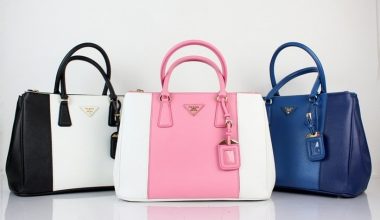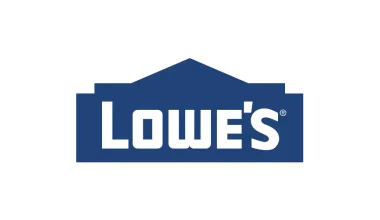Over the years, branding has had an extremely significant impact on the fashion industry because it allows shoppers to recognize products. A logo is everything in the fashion industry. It is the first thing customers see and can make or break a company.
There are many fashion logos, but just a few stick out. This blog post will examine the top fashion logos and what distinguishes them.
These fashion logos range from iconic designs to modern masterpieces and are among the best in the industry.
So, without further ado, here are the top fashion logos…
Overview
It is nearly impossible to overlook a visually appealing logo design. Logos are an essential component of any brand’s marketing strategy. You may have difficulty creating a positive impression in the audience’s minds if you do not have an appealing logo design. The brand symbol is usually one of the first things that people notice about a company, and if it does not engage them, the company may lose potential customers.
People identify a brand by its logo and form opinions based on its elements, which include colors, fonts, shapes or icons, and typography. Because it is critical for businesses to send the right message from the start, they invest a lot of thought into logo design. While some people draw inspiration from their family history or roots, others include elements that represent significant events in their lives.
Regarding fashion logos, you’d be surprised to learn that many of them have fascinating backstories.
Top Fashion Logos
Gucci
While the famous brand is known for its clean and modern wordmark, it is also known for its ‘GG’ lettermark. The emblem, which consists of two interconnected ‘Gs,’ is commonly seen on the fashion house’s handbags, belts, and accessories. People now commonly believe that the initials represent the name Gucci, but they are unaware of the fascinating story behind it.
Guccio Gucci, a little-known designer, founded this brand in Florence in 1921. He worked as a porter at the Savoy and was inspired by the luxury suitcases he had to transport for the guests. Gucci came to Florence after learning and researching various designs and began making handcrafted products for the people.
He rose to prominence quickly and established a luxury fashion house that is now globally recognized. From 1921 to 1933, the brand lacked a logo, but one of Gucci’s sons wanted to give it a distinct identity. He devised the idea of using his father’s initials ‘GG’ as a brand symbol and created the design that is still in use today.
Fendi
The fashion house’s combination logo, which includes both a lettermark and a wordmark, is well-known around the world. In 1925, Eduardo and Adele Fendi founded the fashion house and began producing high-end clothing and accessories. The first logo used by the brand depicted a squirrel holding a nut on a tree branch. This symbol meant a lot to the founding family at the time because it was taken from a painting that Eduardo Fendi gave to his wife. The design was distinctive because it was one of the first animal logos used by a fashion brand.
The brand identity design was altered when Karl Lagerfield joined the fashion house as creative director in 1965. He designed the futuristic logo you see today. Lagerfield was hired to revamp the brand’s fur collection and attract affluent customers. He created the ‘FF’ monogram that is now seen on most bags and clothing. The creative designer designed the inverted’ Fs’ in five seconds, and the initials actually refer to the phrase ‘fun fur.’
Chanel
This luxury brand is one of the most well-known in the world, and its interlocking ‘Cs’ are recognized around the world as a symbol of sophistication and elegance. For decades, celebrities, world leaders, and icons have donned Chanel couture and accessories. Coco Chanel founded the brand in 1910, and she designed the logo herself, which has remained unchanged to this day. There have been few changes to the logo since its inception, which is as intriguing as its creator.
The symbol’s origins have sparked numerous debates in the fashion world. Many people believe that Coco Chanel was inspired by her childhood for the interconnected ‘Cs’ that also appear to be reflections of each other in the mirror. She was raised in a shelter and saw the design in one of the windows of the Aubazine Chapel. It is assumed that the ‘Cs’ were a stained glass pattern that immediately inspired Chanel.
Versace
Gianni Versace, the fashion house’s founder, piqued the interest of his audience and the general public throughout his life. He was dubbed a creative genius when he launched the brand in 1978. His clothing, jewelry, and bags are well-known for their distinctive designs and as a symbol of luxury. The designer first used his name as the logo, which remained the fashion house’s office icon until 1993. Versace redesigned the graphics that year and introduced the illustration of the Greek goddess Medusa, which is still recognized today.
Originally, the logo was available in monochrome as well as black and gold variations. Gianni Versace chose Medusa to represent the brand because he was fascinated by Greek mythology. Athena cursed her because of her beauty, and she had a look or gaze that could turn people to stone. Versace wanted to incorporate that element into the brand so anyone who saw his creations couldn’t look away. Donatella Versace, Versace’s sister, went on to say that Medusa’s head was incorporated into Versace’s home and interiors as well.
Louis Vuitton
The company is well-known for its high-end items, particularly bags and luggage. Louis Vuitton founded it in 1854 and introduced its logo at the time. The fashion house’s symbol has remained constant to this day. While you may be familiar with the lettermark LV, the brand also employs a flower or a Japanese motif on a few of its products. The monogram and flower can be found on various bags and luxury luggage.
Georges Vuitton, Louis Vuitton’s son, hand-drew the initials. Its typography was also introduced at the time and has since gained global recognition. He also devised the use of a motif or flower to distinguish the brand and make it difficult for others to plagiarize or copy the symbol. As the luxury fashion house grew in popularity, its suitcases and bags drew a lot of attention.
Because they were expensive, there was a risk that other designers or fashion houses would begin producing fakes or similar designs and selling them under the Vuitton brand. To avoid this, George Vuitton trademarked the symbol, establishing one of the first examples of fashion branding.
Hermes
This brand is one of the most recognizable symbols of luxury and is on many people’s wish lists. Hermes has attracted a highly exclusive clientele from all over the world, including celebrities and political figures. Theirry Hermes founded it in 1837 in Paris, France. Surprisingly, the company’s logo has remained unchanged since the 1950s.
The luxury brand logo features an elaborate design of a horse and carriage. According to the story behind the logo, the fashion house began as a small shop in Paris that made leather accessories for horses owned by European royalty and nobles. Its logo, which was introduced in 1929, represents the brand’s origins and history.
Jacques Lacoste
The green crocodile can’t be missed anywhere, and most people recognize it right away. The company was founded in Troyes, France, in 1933, and its current headquarters are in Paris. Rene Lacoste and Andre, tennis players, founded the brand, which may be responsible for the first shirt ever worn in the sport with a logo and brand name. Lacoste was a tennis champion who earned the moniker ‘the crocodile’ for his dominating performances on the court.
It’s said that Rene Lacoste saw an alligator-skin suitcase and bet the French Davis Cup team captain that he’d get it if he won. However, the player lost the match but became known in tennis by the nickname. Soon after, he began wearing clothes with alligator or crocodile logos.
Helly Hansen
Helly Hansen was a Norwegian captain who began producing oilskin jackets, clothing, and tarpaulins made from linseed oil-soaked linen in 1877.
Since then, the company has grown, and its logo now features a simple yet stylish red HH on a white background. This adaptable fashion logo works well on men’s and women’s clothing.
They are now known for outdoor sports equipment, waterproof fishing gear, and sailing and snow sports community apparel.
The creatively combined HH fashion logos split at the diagonal to create a distinct and memorable brand mark.
The logotype, set in Helvetica Bold, demonstrates balance and boldness and is frequently set in the red and white colors associated with Switzerland.
Hugo Boss
Hugo Boss AG, one of the world’s most well-known and instantly recognizable fashion brand logos, was founded in 1924 by the legendary fashion designer Hugo Ferdinand Boss.
Initially producing work uniforms for the German military, the company had moved into the fashion industry by the mid-twentieth century.
Hugo Boss’s logo is a simple but effective wordmark set in a bold sans-serif typeface.
The use of negative space creates an interesting visual effect, while the black-and-white color scheme keeps the logo looking classic and timeless.
Sören Stauffer created this original fashion logo in 1985, and it has remained unchanged until 2021.
One of the key strengths of this fashion logo is its simplicity; it can be used on any product or marketing material without looking out of place.
It’s also worth noting that the Hugo Boss fashion brand is one of the few that doesn’t include a symbol or icon in its logo design.
The need to convey style and sophistication distinguishes fashion logos from other types.
A fashion logo must be visually appealing and stylish, conveying the right brand message.
Ray-Ban
Ray-Ban is a sunglasses and eyeglasses brand that was founded in 1937 by the American company Bausch & Lomb.
The brand is best known for its Wayfarer and Aviator sunglasses, popularized by Hollywood stars in the 1950s and 1960s. In 1999, Ray-Ban was sold to the Italian eyewear conglomerate Luxottica.
Ray-Ban’s logo is a stylized version of the company’s initials “RB” within a circle.
The current logo was introduced in 2007 to reflect the brand’s retro beginnings.
Even though their products are meticulous and luxurious, their custom, cursive logotype presents a casual, optimistic brand and a little laid-back in their style.
The Ray-Ban logo’s double ‘R’ mirrors the shape of their most popular product, aviator sunglasses.
This symmetry is an important design element that distinguishes the brand.
The circular border around the Ray-Ban initials also recalls the shape of lenses, while the American flag inspires the blue and yellow color palette.
These elements combine to form a fashion logo that is both stylish and iconic.
Alexander McQueen
Alexander McQueen is a British luxury fashion label founded in 1992 by designer Alexander McQueen. The logo of the company is a skull with crossed swords. Designer Peter Saville created the logo, which first appeared in McQueen’s second collection, “The Birds.”
The Alexander McQueen logo is straightforward but effective. The skull and crossed swords are powerful symbols, and the logo’s black-and-white color scheme looks modern and classic.
The logo is set in Times New Roman, known for its legibility and formal style.
Inserting the letter ‘c’ into the letter ‘Q’ suggests the’seed-like’ potential to grow into the internationally recognized fashion brand that it is today.
Bulgaria
Bulgaria is an Italian jewelry and luxury goods company that manufactures and sells various products, such as jewelry, watches, fragrances, accessories, and hotels.
The Bulgari logo is one of the most well-known and recognizable fashion logos. Bulgari is derived from the Latin word “bulgaricus,” which means “Bulgarian.”
Bulgari’s logo is made up of the brand name in a stylish and modern font. The first letter, “B,” is slightly larger than the others, implying a sense of hierarchy and importance. The brand name is surrounded by a double “C” representing Bulgari’s two founders, Constantino and his son Sotirio.
Bulgari’s logo is simple, elegant, and easy to remember – everything a good fashion logo should be.
Nike
Nike is an American multinational corporation that designs, develops, manufactures, markets and sells footwear, apparel, equipment, accessories, and services worldwide.
Carolyn Davidson, a graphic design student at Portland State University, created the Nike “Swoosh” corporate trademark in 1971.
The company executives chose the mark that is now known as the Swoosh and paid her $35 ($206 in 2015 dollars) for her services.
Nike has since grown to become one of the world’s largest and most recognizable brands.
The Nike logo is widely regarded as one of the world’s most fantastic and famous logos, and it has appeared on some of the world’s most iconic structures, including the Sydney Opera House.
It has also been published in numerous magazines, including Time, Forbes, Businessweek, and Newsweek.
The Nike Swoosh’s simple yet powerful design has made it one of history’s most influential fashion logos.
Superdry
SuperGroup is a British multinational clothing corporation that owns the Superdry brand. They were founded in 2003 in Cheltenham, England. Euan Sutherland is the CEO, and Julian Dunkerton is the founder.
Superdry sells a variety of clothing, footwear, accessories, and homewares for women, men, and children.
Superdry was among the first fashion brands to embrace social media marketing. They have over 12 million Instagram followers and frequently collaborate with high-profile celebrities such as Cara Delevingne and David Beckham to promote their brand.
Superdry has a distinct visual style, as evidenced by its logo written in a custom font. Their product photography and marketing materials heavily use distressed textures and vintage graphics. This gives them a distinct visual identity that is easily identifiable.
Superdry clothing and accessories combine vintage Americana styling with Japanese-inspired graphics.
Levi
Levi Strauss & Co. is a well-known American clothing manufacturer. He founded the company in 1853, and it is best known for its Levi’s jeans brand.
While denim jeans were patented in 1873, Levi’s logo design took 63 years to complete.
The Levi’s logo is one of the world’s most classic and instantly recognizable fashion logos. For over a century, the simple red tab on the back pocket of Levi’s jeans has been a fashion icon.
The simplicity of Levi’s logo is what makes it so successful. The logo is a small red tab with the word ‘Levi’s’ written in white on it. Because of its simple design, it can be recognized even from a distance.
The Levi’s logo is so well-known that it has become synonymous with the brand. People immediately associate Levi’s with the red tab logo. This demonstrates the power of a well-designed logo.
Related Articles
- CHANEL LOGO: What it Symbolizes, Meaning, History
- Socks Brands: 25 Best Brands For Men And Women
- Levi’s Logo: Evolution, Font & History






